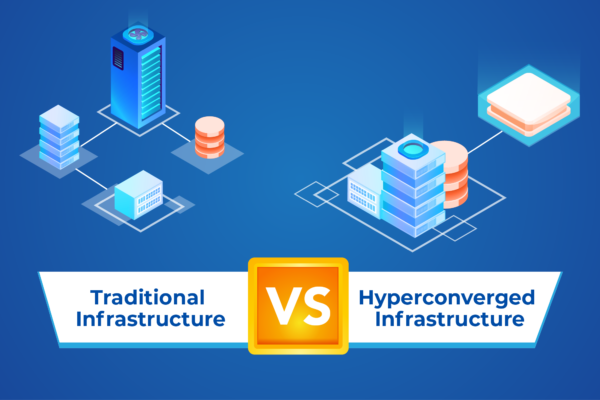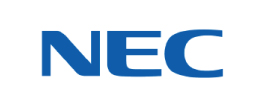Traditional Servers vs. Hyperconverged Infrastructure: Navigating the Evolution of Data Center Architecture
Traditional Servers vs. Hyperconverged Infrastructure: Navigating the Evolution of Data Center Architecture

In the realm of data center architecture, the debate between traditional servers and hyperconverged infrastructure has been a hot topic among IT professionals seeking to optimize performance, scalability, and simplicity in managing their IT environments. Both approaches offer unique advantages and considerations, making it crucial for organizations to understand the key differences between traditional servers and hyperconverged infrastructure to make informed decisions about their data center strategies.
Traditional Servers:
Traditional servers have long been the backbone of data center operations, providing dedicated resources for storage, compute, and networking functions. In a traditional server setup, each component is separate and requires individual management, leading to complexity and inefficiency in provisioning and scaling resources. Organizations typically deploy separate servers for different workloads, resulting in siloed infrastructure and increased management overhead.
One of the primary advantages of traditional servers is their familiarity and reliability. IT teams are well-versed in managing and troubleshooting traditional server environments, making them a comfortable choice for organizations with established IT practices. Traditional servers also offer flexibility in hardware selection, allowing organizations to customize server configurations based on specific workload requirements.
However, traditional servers come with limitations in terms of scalability and agility. Scaling traditional servers often requires manual intervention and downtime, making it challenging to adapt to changing business needs quickly. Additionally, traditional servers can be resource-intensive and space-consuming, leading to inefficiencies in power consumption and cooling requirements.
Hyperconverged Infrastructure:
Hyperconverged infrastructure (HCI) represents a modern approach to data center architecture that converges storage, compute, and networking resources into a single, integrated system. In an HCI setup, software-defined infrastructure abstracts hardware resources and enables centralized management through a unified interface, simplifying operations and enhancing scalability.
One of the key advantages of HCI is its simplicity and ease of management. By consolidating storage, compute, and networking functions into a single platform, HCI reduces complexity and streamlines resource provisioning and management. IT teams can deploy and scale resources more efficiently, leading to improved agility and responsiveness to changing workload demands.
Scalability is another significant benefit of HCI, as organizations can easily add or remove resources on-demand without disrupting operations. HCI architectures are designed to scale horizontally by adding additional nodes to the cluster, providing a flexible and cost-effective approach to expanding infrastructure capacity. This scalability makes HCI well-suited for dynamic workloads and environments where rapid growth is expected.
Additionally, HCI offers enhanced performance and efficiency compared to traditional servers. By leveraging software-defined technologies and virtualization, HCI optimizes resource utilization and enables workload consolidation, leading to improved performance and reduced hardware footprint. HCI also provides built-in data protection and disaster recovery capabilities, enhancing data resilience and availability. In conclusion, the choice between traditional servers and hyperconverged infrastructure ultimately depends on the specific needs and priorities of an organization. Traditional servers offer familiarity and customization options, while hyperconverged infrastructure provides simplicity, scalability, and efficiency. As data center architectures continue to evolve, organizations must carefully evaluate their requirements and objectives to determine the most suitable approach for their IT infrastructure. Whether opting for traditional servers or embracing hyperconverged infrastructure, the key is to align technology choices with business goals to drive innovation and success in the digital age.
Recent Posts
- Traditional Servers vs. Hyperconverged Infrastructure: Navigating the Evolution of Data Center Architecture
- The Future of Healthcare: The Rise of Smart Hospitals
- Unlocking the Benefits of IT Managed Services: Partnering for Seamless Business Operations
- Access Control Systems: Protecting Your Business with Enhanced Security
- PABX: Streamlining Communication for Modern Businesses
Recent Comments
Search
Recent Comments
Recent Posts
- Traditional Servers vs. Hyperconverged Infrastructure: Navigating the Evolution of Data Center Architecture June 4, 2024
- The Future of Healthcare: The Rise of Smart Hospitals June 3, 2024
- Unlocking the Benefits of IT Managed Services: Partnering for Seamless Business Operations November 12, 2023
- Access Control Systems: Protecting Your Business with Enhanced Security November 12, 2023
Archives
- June 2024 (2)
- November 2023 (8)
- October 2023 (4)
- October 2022 (2)
Unlocking the Power of Technology: Your ICT Solution Partner













+63 917 627 9111
sales@prokora.com
Unit M01 DMG Center
52 Domingo Guevarra St.,
Mandaluyong 1550
All rights reserved . PROKORA NETWORK SOLUTIONS INC.
